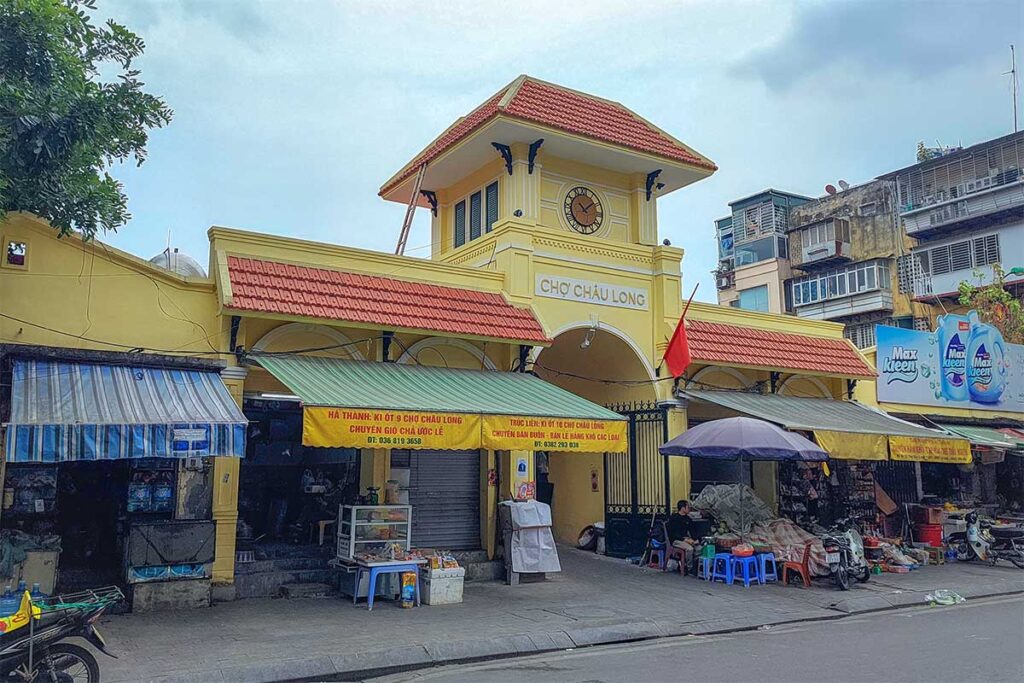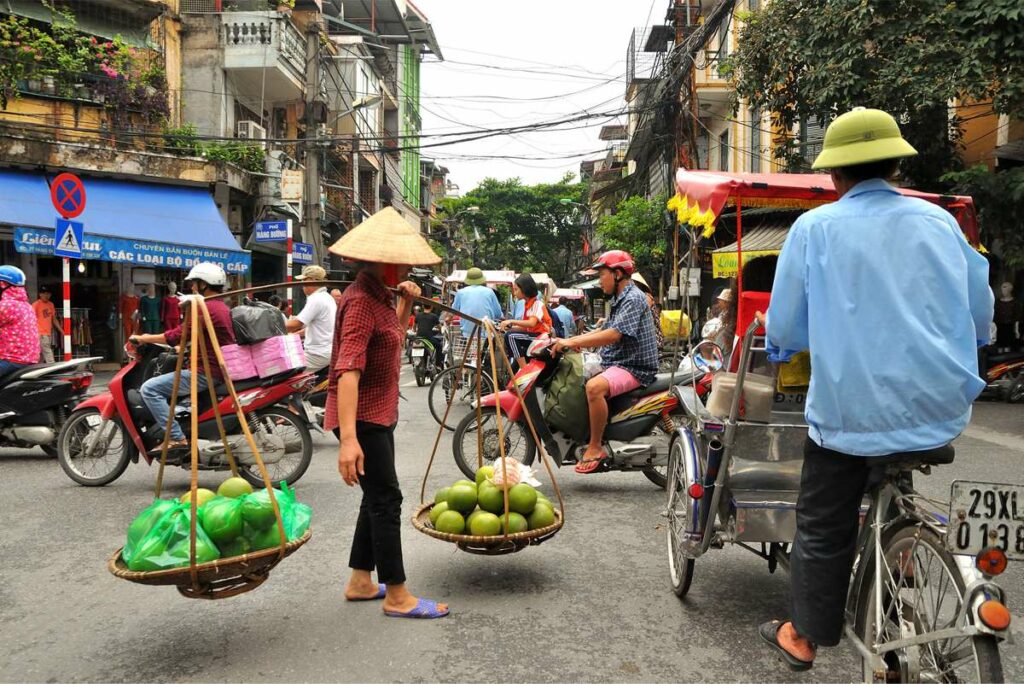What is Chau Long Market like?
Chau Long Market is dark, wet, and chaotic — a true local wet market with no frills or polish. You won’t find souvenir stalls or photo ops here; instead, you’ll step into the gritty rhythm of daily life, where Hanoians shop for the freshest ingredients to cook their family meals. The market still serves thousands of locals who come once or even twice a day, making it a core part of the neighborhood’s routine.
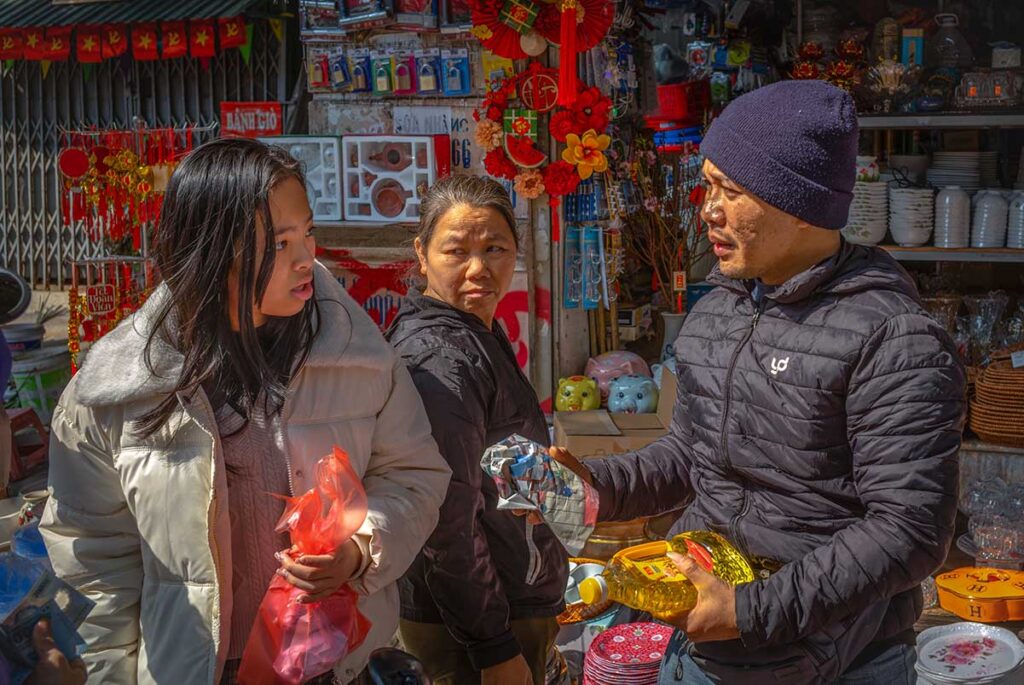
It’s not a sanitized experience. The narrow aisles are damp and slippery, the smell of raw meat and fish hangs in the air, and it’s common to see animals being butchered right in front of you. If you’re not used to this kind of environment, it can feel overwhelming — but that’s also what makes it real. While not designed for visitors, the market sees a fair number of expats and cooking class groups, especially from the nearby Hanoi Cooking Centre. Most vendors are used to foreigners passing through, but the market itself has stayed rooted in local life.
History of Chau Long Market
Chau Long Market began as an informal trading spot in the aftermath of the Vietnam War, during the country’s subsidy period when goods were rationed and sold using coupons. It served as a distribution point for basic necessities, with designated kiosks selling state-supplied products like vegetables and rice. After the Đổi Mới reforms in the late 1980s opened the economy, Chau Long gradually transitioned into a family-run wet market, where vendors could operate independently.
The last major renovation took place in 1998, but proposals to modernize it further have met strong resistance. In 2014, the city announced plans to redevelop Chau Long into a modern shopping complex, similar to projects at Mo, Hang Da, and Cua Nam markets. But vendors pushed back, citing the failure of those converted markets and their deep ties to the local community — many of them have worked here for decades.
Perhaps the most unusual part of the market’s story is its spiritual core: it was built around two old graves. According to local belief, the first vendors were granted permission to trade on this sacred ground by the descendants of the deceased. To this day, many stallholders burn incense and pray at the graves on the first day of each lunar month, asking for good health, luck, and steady business.
What to see at Chau Long Market
Layout and Atmosphere
Chau Long Market is housed in a large two-storey building with stalls extending into the surrounding sidewalks. Inside, it’s dim, humid, and chaotic — narrow aisles packed with vendors, puddles underfoot, and even the occasional motorbike weaving through. The vibe is raw and intense, offering a sensory experience that’s very different from polished markets or tourist shops.
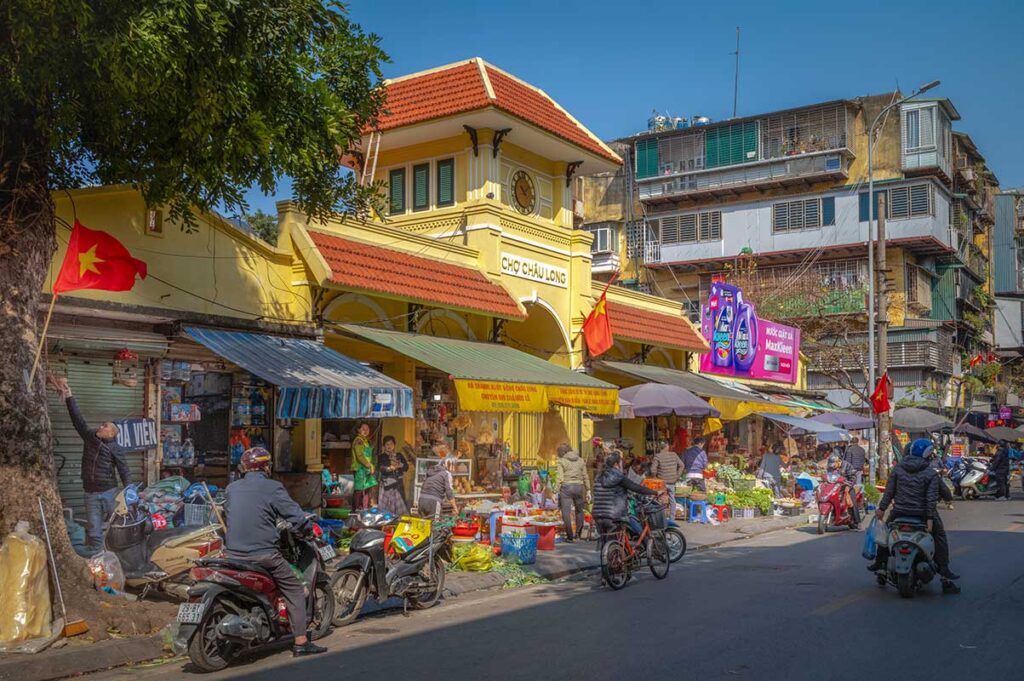
What’s sold at the market
Fresh Meat
Pork, chicken, duck, and sometimes frogs are butchered and prepared on the spot. It’s not unusual to see meat laid out on metal trays without refrigeration.
Live Seafood
Fish, eels, and even turtles can be found swimming in buckets or tubs, ready to be sold by weight or size.
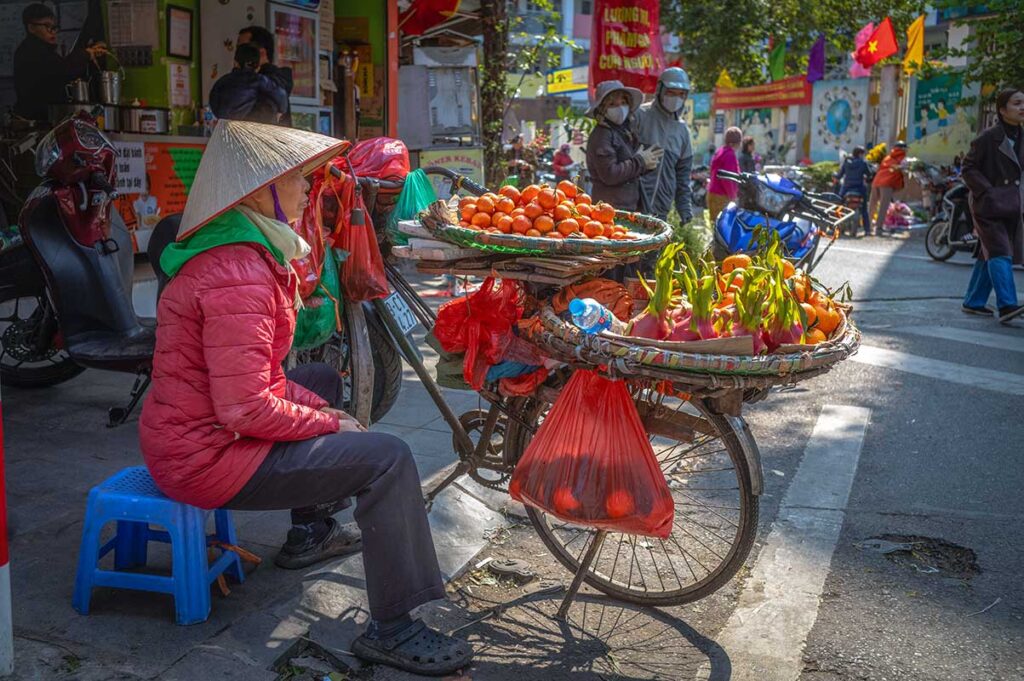
Fruit & Vegetables
A colorful spread of seasonal produce fills many stalls — everything from jackfruit and lychees to bitter melon and fresh herbs. Vendors frequently spray water over the greens, leaving the floor wet.
Dry Goods & Groceries
You’ll find staples like rice, noodles, cooking oil, sauces, fish sauce, and spices. These are usually packed in bulk or stacked along shelves toward the back or upstairs areas.
Household Items
Some stalls also sell plastic containers, cleaning tools, and basic kitchen supplies, though these are limited and clearly not the main focus.
Cooked food on the fringes
While there’s no dedicated food court, a few food vendors operate just outside the main building. They serve simple local meals like bun cha, com binh dan (set rice meals), and noodle soups. These stalls mostly cater to workers, not tourists — but they’re open to anyone and offer a cheap, authentic bite.
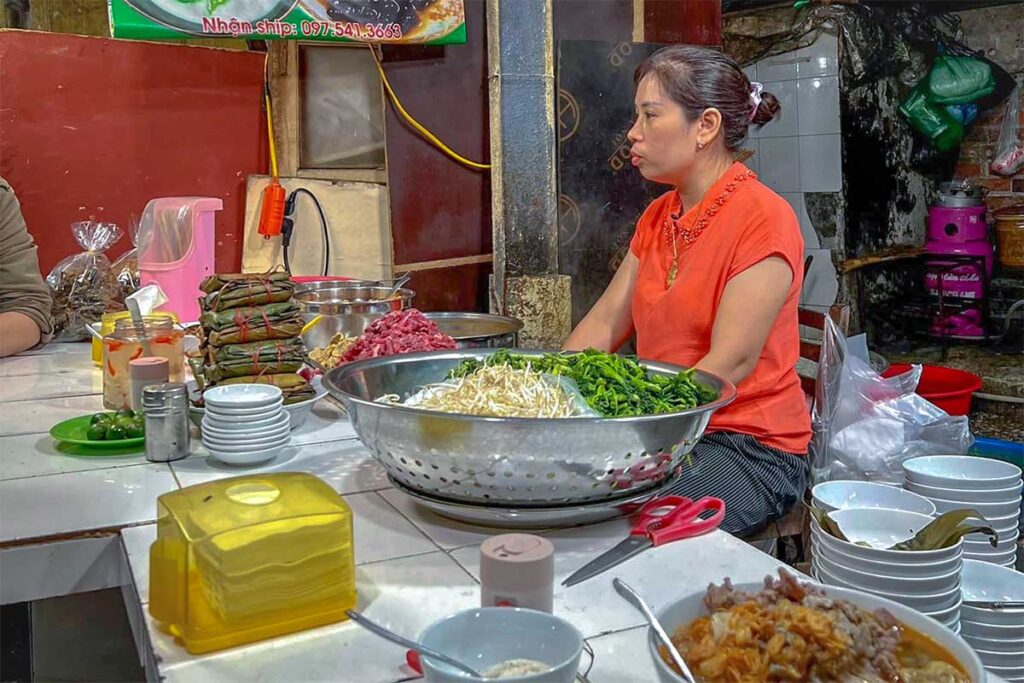
A true sensory experience
The sights, sounds, and smells of Chau Long Market are intense:
- The scent of raw fish and fermented sauces
- The clatter of knives and chatter between vendors
- Wet floors, steam from cooking pots, and dripping ice from seafood trays
It’s not for everyone, but it’s a vivid window into Hanoi’s daily life.
How vendors interact with foreigners
Most sellers are focused on their regular customers and won’t try to lure you in. They’re used to seeing foreigners — especially because the Hanoi Cooking Centre brings groups here — but they don’t perform or push. You’re free to wander, watch, or buy, without pressure.
Location and How to get there
Where is Chau Long Market?
Address: 15 Chau Long Street, Ba Dinh District, Hanoi
Chau Long Market sits just north of Hanoi’s Old Quarter, near the edge of Truc Bach Lake. It’s technically in Ba Dinh District but right near the border with Hoan Kiem, making it an easy detour from many central attractions.
Getting there
From the Old Quarter
The market is about 1.5 km from most parts of the Old Quarter — a 15–20 minute walk, depending on your starting point. The most direct routes are via Hang Than or Nguyen Truong To streets. It’s walkable, but not especially scenic.
From Ba Dinh Square
Also around 1.5 km away, but with a nicer walking option: head toward Truc Bach Lake and follow the lakeside path. This route lets you pass Quan Thanh Temple and enjoy some open views of the water.
By Taxi or Grab
A short ride from central Hanoi costs around 30,000–50,000 VND. If you’re short on time or don’t feel like navigating traffic on foot, this is the easiest option.
What’s nearby (for a longer visit)
Truc Bach Lake: Directly behind the market — good for a short lakeside stroll or a coffee break.
Quan Thanh Temple: An 800-meter walk along Truc Bach Lake. One of Hanoi’s most significant Taoist temples, known for its giant bronze statue and peaceful setting.
Tran Quoc Pagoda – Located just across the road from Truc Bach Lake, on a small peninsula in West Lake. About a 15–20 minute walk from the market via Thanh Nien Road.
Bookworm Hanoi – A popular English-language bookstore just a few steps away at 44 Chau Long Street. Great for travelers looking to pick up a book about Vietnam or browse something new.
Tip: Want to explore more of the area? Check out our guide to Ba Dinh District for more ideas.
Is Chau Long Market worth visiting?
Chau Long Market isn’t for everyone. It’s raw, cramped, and often unhygienic by Western standards — with strong smells, butchered meat in the open, and wet, cluttered walkways. If you’re looking for a clean, curated market experience or a place to shop for souvenirs, this definitely isn’t it.
But for travelers who want a window into real daily life in Hanoi, it’s one of the most authentic spots you’ll find. This is where locals come — not once a week, but often twice a day — to buy what they need to cook family meals. You’ll see ingredients up close, watch the rhythms of trade, and get a deeper feel for how the city works behind the scenes.
